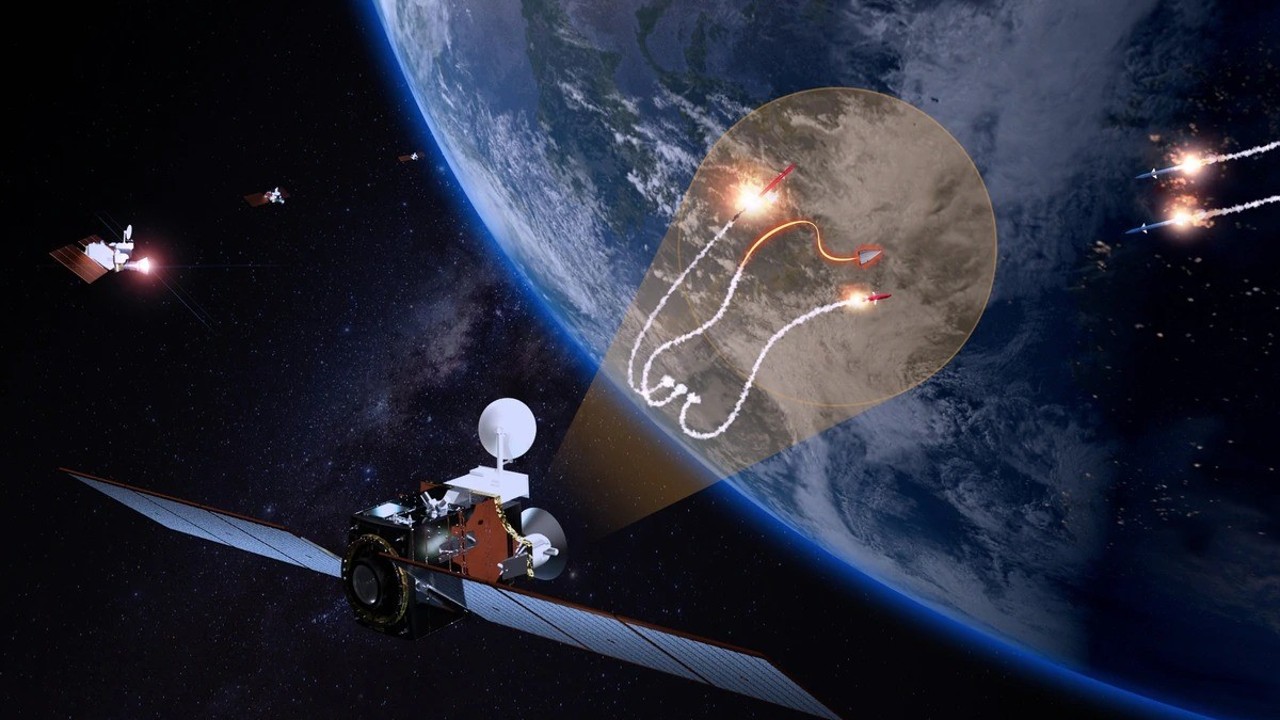Space Force wants 'Foo Fighter' satellites to track hypersonic missiles
The program shares its name with the infamous UFOs that plagued Allied aviators during World War Two.

The U.S. Space Force's Space Development Agency wants a satellite constellation known as FOO Fighter to help it better detect and track hypersonic missiles.
In a contract opportunity posted on July 7, the Space Force's Space Development Agency (SDA) described its planned Fire-control On Orbit-support-to-the-war Fighter program, also known as F2 or FOO Fighter. The document states that the program will initially consist of a constellation of eight satellites equipped with both infrared and optical sensors that will "accelerate the ability to provide fire-control in support of global detection, warning and precision tracking of advanced missile threats, including hypersonic missile systems."
In general terms, fire-control incorporates various technologies such as radar or other sensors, targeting computers and ranged weapons together into a cohesive system that can detect threats or targets and then direct weapons or other countermeasures at them. Such a satellite constellation would presumably be able to detect and track hypersonic missiles, then direct interceptors to destroy them. The SDA aims to launch the prototype FOO Fighter constellation in 2026, according to the contract opportunity, which adds that additional details about the program are available but classified at the Top Secret level.
Related: What is the U.S. Space Force and what does it do?
The program shares its name with the infamous UFOs that plagued Allied aviators during World War Two. These mysterious balls of light were reported on numerous occasions worldwide despite not appearing on radar. Many pilots reported that the luminous orbs appeared to be able to out-maneuver their aircraft, according to Smithsonian Magazine. To this day, there isn't a definitive explanation for the Foo Fighters of World War Two, although several prosaic hypotheses have been put forward including reflections of light or atmospheric discharges of static electricity.
UFOs aside, the development of technologies that can out-maneuver modern military aircraft and tracking systems are prompting the development of the FOO Fighter constellation and other programs. Some new types of hypersonic weapons such as glide vehicles are capable of much higher levels of speed and maneuverability than previous missiles, meaning new detection and tracking capabilities and even new interceptors are needed to counter them.
The FOO Fighter program adds to the U.S. military's continuing pursuit of space-based sensors designed to warn of and track both current and emerging threats such as hypersonic missiles.
Breaking space news, the latest updates on rocket launches, skywatching events and more!
In August 2022, United Launch Alliance (ULA) launched the sixth and final satellite in the Space Based Infrared System Geosynchronous Earth Orbit (SBIRS GEO) constellation, which provides "infrared surveillance to support missile warning, missile defense, battlespace awareness and technical intelligence," according to the Space Force.
And in April of this year, SpaceX launched a set of 10 advanced new satellites known as Tranche 0 for the U.S. Space Force as part of its Proliferated Warfighter Space Architecture, a satellite constellation to boost the service's missile detection and tracking capabilities.

Brett is curious about emerging aerospace technologies, alternative launch concepts, military space developments and uncrewed aircraft systems. Brett's work has appeared on Scientific American, The War Zone, Popular Science, the History Channel, Science Discovery and more. Brett has English degrees from Clemson University and the University of North Carolina at Charlotte. In his free time, Brett enjoys skywatching throughout the dark skies of the Appalachian mountains.
